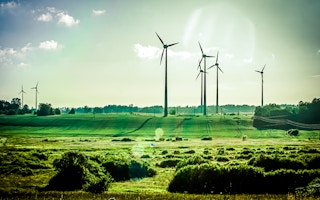European researchers investigating ways to reduce greenhouse gas (GHG) emissions to the internationally-agreed safety level have arrived at the good news that we can just about achieve it – provided all nations show the political will to do so.
They conclude that applying globally the climate policies that are already working in some countries could substantially reduce emissions, close to where they need to be to prevent global average temperatures rising more than 2°C above their pre-industrial level.
The researchers − from the NewClimate Institute, PBL Netherlands Environmental Assessment Agency and the International Institute for Applied Systems Analysis − detail their findings in a report that examines the impact of “good practice” emission reduction policies in nine different areas globally and across six countries: China, Brazil, India, the US, Russia and Japan.
“
It is clear that governments can learn from each other to find effective policies to reduce emissions.
Niklas Höhne, founding partner of NewClimate Institute
Energy efficiency
The areas examined include: renewable energy; a variety of energy efficiency standards for buildings, car fuel efficiency, appliances and lighting, and industry); hydrofluorocarbons (HFCs); emissions from fossil fuel production; electric cars; and forestry.
The researchers looked at the most ambitious “good practice” policies around the world that are being implemented now, and calculated the difference they would make if every country applied them. They say that difference is huge.
In the arcane language of the greenhouse gases, the unit the researchers use is known as the GtCO2e − an abbreviation for “gigatonnes of equivalent carbon dioxide”. It is a simplified way to put emissions of various greenhouse gases on a common footing by expressing them in terms of the amount of CO2 that would have the same global warming effect.
The report says that implementing good practice policies is projected to stabilise GHG emissions at 49-50 GtCO2e by 2020, decreasing to 44-47 GtC02e by 2030 – not too far from the level needed to attain the 2°C emissions range (30-44 GtCO2e) that the world is aiming for by 2030.
Direct replication of good practice policies is expected to halt emissions growth significantly in most regions before 2030. In contrast, current policies are expected to see emissions continue to increase to around 54 GtCO2e by 2020 – and 59-60 GtCO2e by 2030.
“It is clear that governments can learn from each other to find effective policies to reduce emissions,” says Niklas Höhne, a founding partner of NewClimate Institute. “If everybody were to work towards achieving such high standards in key areas, this would have a significant impact.”
The study found that the good practice policy area that could reduce the most emissions was renewable energy (3.7-6.0 GtCO2e), where China, Costa Rica, Germany and Tuvalu’s policies were among the world’s best.
Interesting targets
With F-gases (fluorinated GHGs), where good practice policies could reduce emissions by around 1.1 to 2.2 GtCO2e, the EU, Mexico, China and the US had what the authors call “some interesting policies or targets”
On energy efficiency, the analysis shows that good practice policies can significantly reduce the impact on GHG emissions of economic growth, by decarbonising the energy supply and improving energy efficiency in the demand sectors, which it says is good news for developing countries.
The opportunities were particularly significant for China, whose emissions are projected to increase to approximately 15 GtCO2e by 2030. But under a good practice policy scenario, they would peak around 2020, and in 2030 would be at about 12 GtCO2e or lower.
However, the report says China is already among the leaders in policies in a number of areas.
Hanna Fekete, another founding partner of NewClimate Institute, says climate policy-making in China has picked up speed in recent years, and that recent developments in reduction of coal consumption, for example, set a promising basis for further action in the future.

















